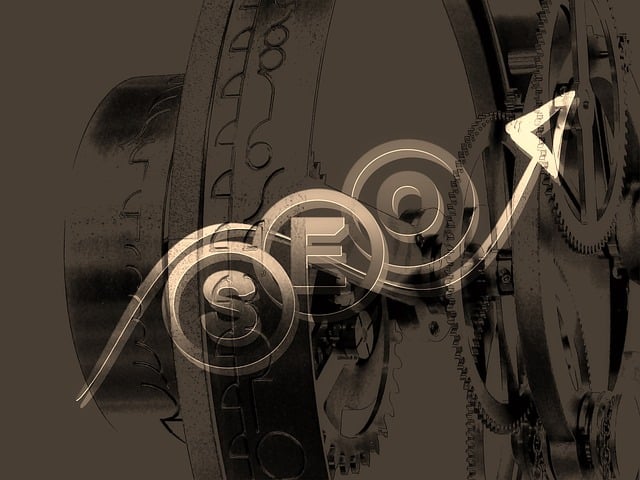The FAQ SEO Schema is a powerful tool to boost website visibility and user engagement by providing structured data to search engines, leading to improved knowledge graph displays and rich FAQ snippets in search results. Implementation involves adding specific markup to web pages, focusing on defining the `FAQPage` type, tagging each question-answer pair with properties like `name` and `value`, and using relevant metadata for discoverability. Best practices include clear structuring, detailed metadata, context providing, interactive elements, optimization for voice search, and regular use of structured data tools to ensure optimal performance and increased click-through rates, average session duration, and reduced bounce rates.
Adding the FAQPage schema to your website’s content is a strategic move to boost user engagement and optimize search engine results pages (SERPs). This schema enables rich, featured FAQ snippets, providing users with quick, direct answers. In today’s competitive digital landscape, understanding and implementing the FAQ SEO schema can set your content apart. By structuring your FAQs effectively, you can increase visibility, improve click-through rates, and deliver a better user experience, ultimately driving higher search rankings.
- Understanding FAQ SEO Schema and Its Benefits
- Why Incorporate FAQPage Schema for Rich Results
- Key Elements of an Effective FAQPage Schema
- Implementing the Schema: Step-by-Step Guide
- Measuring Success and User Engagement Impact
- Best Practices and Future Trends in FAQ Schema Optimization
Understanding FAQ SEO Schema and Its Benefits

The FAQ SEO Schema is a powerful tool for websites aiming to boost their search engine visibility and user experience. By implementing this schema, web pages can provide structured data that helps search engines understand the content better, leading to enhanced knowledge graph results. This, in turn, increases the likelihood of capturing a more significant portion of users’ attention on search result pages (SERPs).
Integrating FAQ Schema offers several benefits, including improved user engagement and click-through rates. Search engines like Google utilize this structured data to display rich FAQ snippets in SERPs, featuring direct answers from your content. This optimization enhances the overall search experience, encouraging users to interact with your website instead of competing results. How to Add FAQ Schema is a straightforward process that involves incorporating specific markup into your web pages, ensuring your site is eligible for these valuable Rich FAQ Results.
Why Incorporate FAQPage Schema for Rich Results

Incorporating the FAQPage schema into your website’s content is a strategic move that can significantly boost both user experience and search engine optimization (SEO). This schema plays a pivotal role in helping search engines understand your content better, especially when it comes to frequently asked questions. By utilizing this structured data format, you’re essentially providing search algorithms with a clear map of your content’s hierarchy and intent.
The primary benefit lies in the potential for rich FAQ results on search engine result pages (SERPs). With the FAQPage schema, search engines can display question and answer pairs directly, making it easier for users to find what they need without clicking through to individual pages. This not only enhances user engagement but also increases the chances of capturing valuable real estate on SERPs, which is a highly competitive space where every fraction of a second counts. Additionally, this schema facilitates what’s known as FAQ Snippet Optimization, allowing you to craft compelling and accurate answer excerpts that can capture the essence of your content at a glance.
Key Elements of an Effective FAQPage Schema

An effective FAQPage schema is a powerful tool for enhancing website content and user experience. When structuring your schema, focus on including key elements that accurately represent your frequently asked questions and provide valuable context. The first crucial element is defining the `Schema FAQPage Type`, ensuring search engines recognize your content as a comprehensive FAQ section. This involves tagging each question-answer pair with the appropriate properties, such as `name` for the question and `value` for the answer.
Additionally, consider adding relevant metadata to improve discoverability. Utilize the `How to Add FAQ Schema` technique by incorporating structured data markup, making it easier for search engines to crawl and interpret your content. This not only enhances your site’s eligibility for rich FAQ results but also optimizes your search engine rankings. By implementing these strategies, you can expect to capture more user attention, improve engagement, and potentially increase your website’s visibility on SERPs.
Implementing the Schema: Step-by-Step Guide

Implementing the FAQ SEO Schema is a strategic process that can significantly enhance your website’s visibility and user experience. Here’s a step-by-step guide to help you navigate this technique:
1. Identify Frequently Asked Questions: Start by compiling a list of common questions that your target audience might have about your products or services. Organize these questions in a logical, thematic order. This step is crucial as it ensures that your FAQPage schema provides valuable and relevant information.
2. Choose the Right Schema Type: The FAQPage schema offers two primary structures: ‘FAQ’ and ‘Accordion’. For a dynamic and interactive user experience, consider using Accordion Schema SEO, which allows questions to be expanded or collapsed. This not only improves engagement but also signals search engines about the nature of your content.
3. Mark Up Your Content: Utilize HTML5 semantic markup to implement the schema. Wrap each question and its corresponding answer within `
- ` (description list) items. The `
- ` tag represents the question, and `
- ` for the answer. Ensure proper nesting and indentation for better readability.
4. Add Contextual Details: Enhance your schema by including relevant attributes such as `itemid` to identify each question uniquely and `itemtype` to specify the FAQPage type. These attributes provide search engines with additional context, improving the accuracy of rich FAQ results.
5. Verify and Test: Utilize tools like Google’s Structured Data Testing Tool to validate your schema implementation. This tool checks for errors and provides suggestions for optimization. Additionally, monitor your website’s performance in search results to gauge the impact of the implemented Schema FAQPage on user engagement and SERP real estate.
Measuring Success and User Engagement Impact

Measuring success with a FAQPage schema involves tracking key performance indicators (KPIs) such as click-through rates (CTR), average session duration, and bounce rate. By analyzing these metrics, you can gauge how effectively your schema is enhancing user engagement. A high CTR indicates that users are finding the answers they seek quickly, leading to better user experience and lower bounce rates. Additionally, monitoring time spent on page reveals whether visitors are actively interacting with the FAQ content, which is a strong signal of satisfaction and interest.
The impact on user engagement can be profound. Well-structured FAQ schemas, like Accordion Schema SEO, encourage exploration and interaction. Users can easily navigate through topics, fostering a sense of control over their information consumption. This enhanced interactivity not only improves user experience but also signals to search engines that your content is valuable and relevant, potentially leading to improved rankings in SERPs.
Best Practices and Future Trends in FAQ Schema Optimization

To optimize your FAQ Schema for maximum impact on search engine rankings and user engagement, several best practices should be followed. First, ensure that each FAQ entry is structured with clear question and answer pairs, using the `FAQPage` schema type. This promotes accessibility and makes your content more digestible for both users and search engines. Implement detailed and accurate metadata for each question, incorporating relevant keywords naturally to enhance FAQ Snippet Optimization. The schema should also include a summary or brief introduction to the FAQ section to give users a clear understanding of what they can expect.
Looking ahead, future trends in FAQ Schema optimization suggest an increased emphasis on interactive elements within the schema itself, such as user ratings and comments, which can further enrich Rich FAQ Results. Voice search optimization is another area gaining traction; tailoring your schema to accommodate voice query patterns can significantly improve visibility. Additionally, leveraging structured data tools like Google’s Structured Data Testing Tool can help identify and fix any issues early on, ensuring your schema is future-proof and aligned with the latest SEO best practices.
